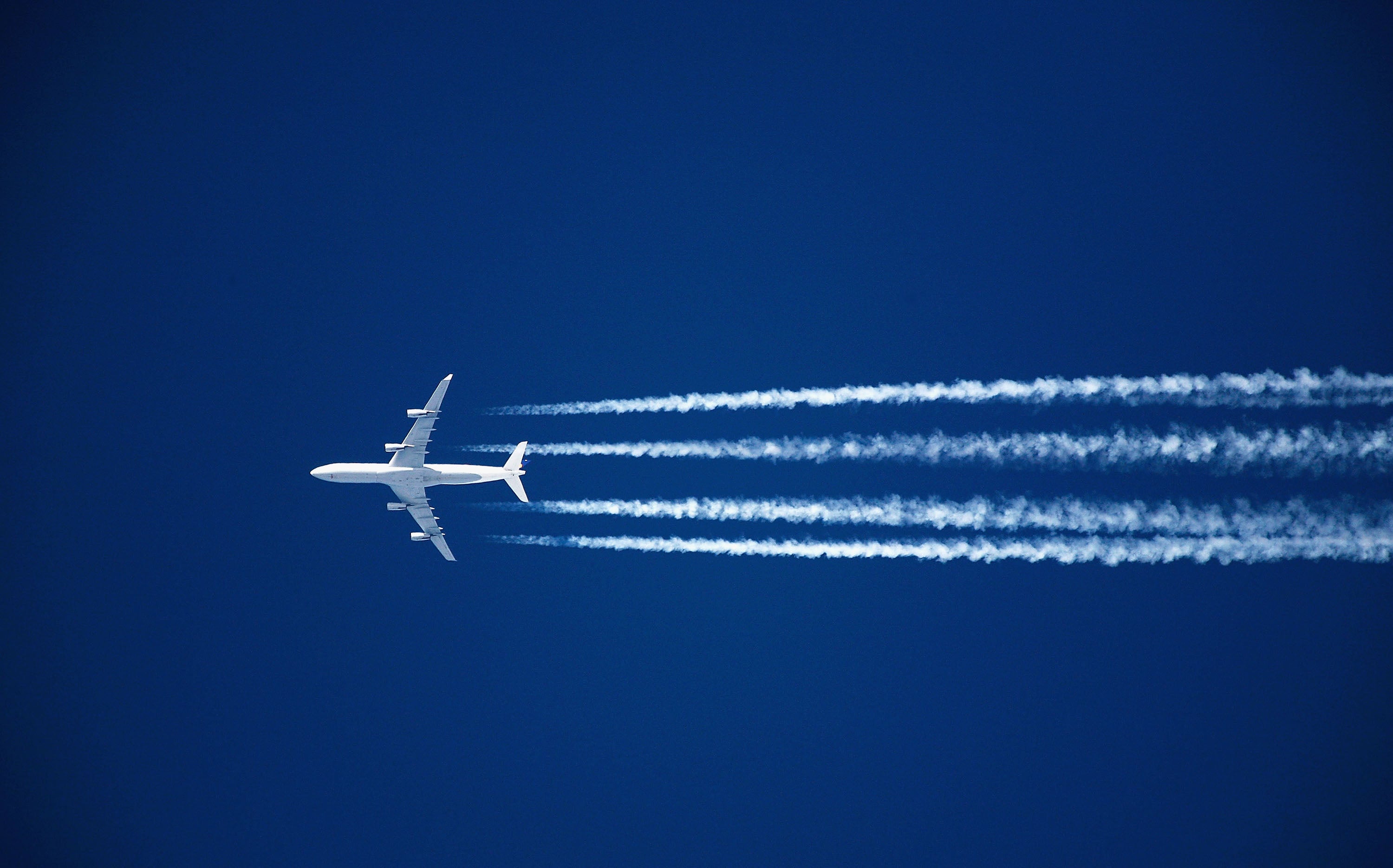Terror of the skies: what should travelling look like after Covid?
Post-Covid travel is a headache. But the pastries at the other end are too powerful a draw, writes Kate Hughes


There’s only one problem I can see in the Covid clouds finally parting over Blighty: you can see the vapour trails on all those planes gradually refilling the skies.
From our vantage point in west Wales, the ones over our heads are the high-altitude-glinting-off-the-sun variety scoring the blue on their way north to the New World.
The kids make a game of guessing their destinations. Me not so much, and I know I’m not the only one who enjoyed the streak-free lockdown air.
We have always understood that it’s the take-off and landing that were really bad for the environment. Those short haul hops we’re so used to in Europe are right up there among the most destructive ways to travel in terms of carbon emissions.
But research released in 2019 shows the vapour or contrails from aircraft themselves are more climatically damaging than all the carbon dioxide ever emitted from their engines. As the vapour freezes it turns into ice crystals, trapping heat in the atmosphere. That heat trapping has more effect than the carbon emissions we’ve all been focusing on. Oh great.
The last time I flew anywhere was 2017 and, to be honest, it hasn’t proved all that restrictive, with electric trains now criss-crossing the continent with ease.
But now, with the world opening up and the drive to get the hell away from our four walls as strong in our house as in yours, we have a conundrum. It’s called “half term in Portugal”, our first trip abroad since 2019, and it is doing my head in.
We know flying is out. Driving a combustion engine car with only the driver in it isn’t great either, emitting around 171g of carbon for every kilometre travelled.
Taking the bus is next, at 104g according to the Department for Business, Energy and Industrial Strategy (BEIS), followed by a fully loaded car (43g), coach (27g) and Eurostar at only 6g per km travelled.
Which is ideal, except that the international, long-distance route I had scoped out to get down to the Algarve, the one that seemed to survive every previous crisis, has been killed off by Covid.
I have to find a way. I will find a way. Pastéis de nata are just too powerful a force to resist. Besides, sleeper trains make me feel like Agatha Christie, just with less tweed.
There is much promised on this front as nations around the world race to net zero by 2050, with a large network of sleeper trains on the way that will connect Paris to cities across western Europe.
Get on at Copenhagen, wake up in Madrid, or Rome or Barcelona by way of an Aperol in the saloon car? Yes thank you very much, to say nothing of the hotel savings made as you snore your way across Europe in a futuristic pod.
I feel a win-win coming on.
The slight snag is that you won’t be able to get on one until 2024 at the earliest. I need a solution in two months.
I could drive if I was in anything more up-to-date than a first generation electric vehicle whose infuriating charging demands would extend the 24-hour journey to a seeming year and a half. A series of coaches with two tiny humans on my own would surely be inviting a nervous breakdown – not necessarily my own either.
And if anyone else suggests a bike with a massive and entirely unhelpful smirk on their face as they trot off to the airport, I’m going to throttle them.
No, I’ve come back round to my beloved trains. But it is proving tricky. Three changes and the same number of days tricky. And that only gets us to Barcelona, which the eagle-eyed among you may have spotted is in the wrong bloody country.
I’m a long way from giving up. But I’m starting to wonder if the universe is trying to tell me something.
The thing is, there will always be an environmental impact however you travel so the most eco-friendly journey is the shortest possible one.
Maybe it’s time to accept what everyone else around here is embracing, especially now the sun has made itself known: the ideal family holiday is one in the back garden in a tent watching all those vapour trails through the break in the clouds.
Join our commenting forum
Join thought-provoking conversations, follow other Independent readers and see their replies
Comments
Bookmark popover
Removed from bookmarks